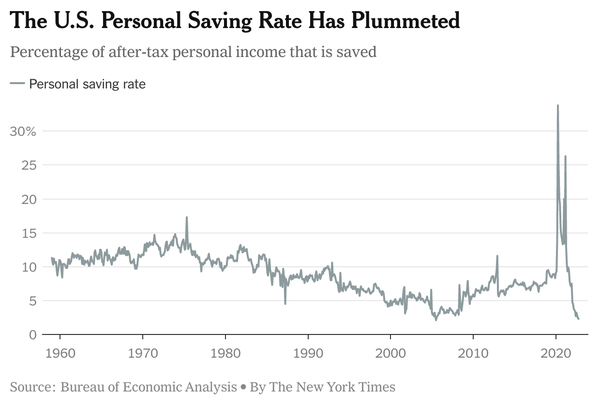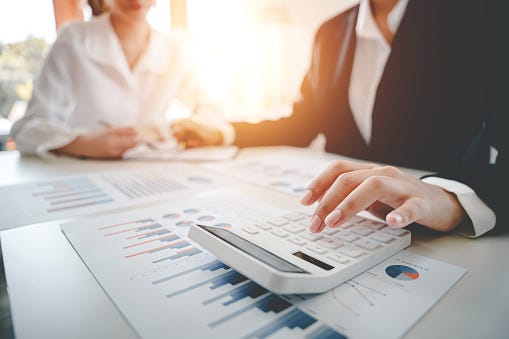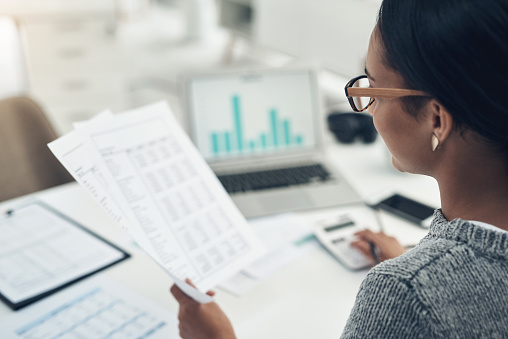As we head into the final stretch of the year, taxes are already on millions of Americans’ minds. In fact, the day after tax season is over, it’s never too early to begin filing for the following year. It’s arguably the most important duty an American citizen must keep tabs on.
Whether you’re a self-employed business owner who’s in the highest tax bracket but keeps majority of their active and or passive income thanks to tax-write-offs or are in the opposite boat, taxes are by far Americans’ largest ongoing liability and expense.
Surprisingly with over 80% of Americans not reporting paying taxes legally last year, I have a feeling Americans are really better off financially than the media tells us. After all, good news doesn’t always sell or get clicks. Just look at the wild revenge spending going on since the rollout of vaccines. Americans are saving at rock-bottom levels as if the meme saga is being relived and stimis are flying from the skies. The real test will come in 2023.
For a brief period during lockdowns, savings rates soared due to immense fear on the horizon to make ends meet. However as the Fed’s dovish plans took off, restrictions eased, markets roared and easy-money policies took over, spending shot up and savings plummeted. Currently, the national savings rate is at dangerously low levels around 3%. Clearly, if the Fed has to hike by a record 4x+ by 75 bps, I think Americans are better off than they portray.

At least in NYC and SF where stealth wealth is real and everyone wants to blend in and look less wealthy for safety reasons, mainly not to cast attention on themselves, if Americans want to save, spend, or invest more or less, it’s in their control more than ever.
Planning for the worst, and hoping for the best isn’t our favorite mantra to hear but if it needs to happen, there will be a way to curb all this spending. Good news is bad news in this sense. Although the Fed plans on curbing its rate hikes to 50bps on Dec 12th, with strong GDP and job opening numbers released, consumers and employers seem to be truly resilient with inflation not hurting the top or bottom lines as bad as previously expected.

Low To High
Although 2022 has been shaky on so many levels, what’s especially unusual about this year in the markets is that bonds (FI) and risk assets (higher equity risk premium for more risk taken), have both taken a nose dive. But what’s bad is really good news for yields since tanking equities means more risk-free guaranteed rates and less guesswork! Short-term treasuries (bills and notes) for the past couple of months, especially in Q3 as inflation was still rampant from the summer months were yielding a whooping 3–4.5%, not to mention Savings I Bonds at an adjusted inflationary rate of 9%. That’s pretty decent for not doing much number crunching, betting on winning stocks, options trading, or forecasting cashflows for a company that may go sideways at any minute.
What’s also been in our favor is that despite rising investment yields which means lower asset valuations and growth, is that once very expensive high-growth companies that were trading at 20 sometimes 30x their share price into the future, are now trading at bargain-basement levels.
This certainly won’t last forever!
In November as October’s CPI reading was announced, equities began to rally again after a higher-than-expected lower inflationary report. Since highly interest-rate sensitive stocks within real estate, tech and financials trade on discounted future earnings with higher valuations, this makes them a favorite pick when borrowing costs are low. Surprisingly, as cash cushions, they still need to borrow billions quarterly and are as cyclical as mortgage rates.
Fortunately, another plus to rising equities is lower taxes. Sticking to increasing your investment income (passive eventually) over active income is most favorable long-term to get yourself in the lowest marginal tax bracket as possible and reinvest as much back.
This year, the majority of investors, especially active managers and actively managed portfolios who got slammed can thank their losses for this sweet return in the end, if you know how it works in your favor!
Tax Loss Harvesting 101
As I write this, I’m reminded that over 80% of Americans are financially illiterate. As a 2-day-old 22-yr old, I’ve discovered that most folks, even those double my age, are most likely not familiar with this tax advantageous secret and should be briefed ASAP before time runs out.
This year in particular is one for the record books in terms of rapid downturns and looming recession fears. We saw it partially coming after all the speculation, hype, delusion, dry powder, and excess froth in the markets for the past 2 years but a bear market not seen since 2018 and roughly half as bad as what played out in 2008, 2022’s shakeup was not expected as analysts predicted.
Although a mighty recession was predicted at a greater scale only a few months ago than what economists forecast today for 2023, we’re still not out of the woods. But we do surprisingly have more control than we think and don’t have to let this sour market ruin the vibe into the Santa Clause rally.
So what is this tax incentive from selling losers within your portfolio? Tax loss harvesting in its simplest form means selling your losses (poor-performing stocks) and using those investment losses to offset your capital gains (long-term income tax) for the year.
According to the US tax code, any capital losses incurred this year can be sold against your gains from this year once taxes are filed in April. Although this can still trigger losses and taxes if done excessively day trading style triggering short-term capital gains tax (income tax), for long-term investors in mind who want to get rid of some bad apples and not stick to their once prized company possibly Carvana, Meta, etc. after witnessing this year’s poor results, selling your positions to offset the capital gains from selling better-performing assets can be in your favor.
These capital losses this year can be used against the gains, hence the name harvesting to regain those benefits back in the future. Although nothing is ever guaranteed in the markets, what’s certain is uncertainty so sticking to what you know best and makes sense will serve you down the road.
Although stocks may be down 20%, selling strategically is in your favor especially to recoup the gains you’ve so diligently, or most of the time, by luck yielded.

The Million Dollar Question — When Is The Right Time to Sell + By How Much?
Unfortunately, most investors stick to what’s comfortable not plan for their future selves. For example, it feels better to probably sell at the pit than at the peak and buy at the peak instead of at the pit since both occurrences are tough to stomach but that’s what fools most investors. Become comfortable with the uncomfortable by digging for deals and cashing out when you see delusion coming.
Predicting how high or low your favorite tech behemoth will go is a fool’s game. What’s most important is to track how consistently you invest through DCA (dollar-cost-averaging), that your emotions aren’t getting int the way, and you’re maxing out your tax-deferred retirement accounts, 401(k), 403(b) to take advantage of compounding and of course, lower tax bills to report lower active income and more investable income down the road.
If you’re a true passive investor with over 60% of your tax-advantaged portfolio consisting of ETFs or index funds that mirror public indices, no matter if half of the stocks tank as part of that basket, the over-performers should compensate and overweight it. That’s why passive investing is far more favorable for those who want to sleep at night and have their investments actually work for them in the background, not treat it as a full-time job to track all day long!
Day trading or timing the market is a game no one should play unless you plan on losing constantly. No wonder passive investors historically beat out active investors. It’s like betting on the World Cup. It’s way too unpredictable! Who would’ve expected Argentina to lose to Saudi Arabia? Once prized teams play on the world stage, it’s either the prominence, arena, home team jitters, or the crowd that freaks them out and everything becomes unpredictable.
From sports betting to short-term day trading, you should mainly sell only if your emotions are getting in the way impacting your daily life based on what’s happening in your portfolio, you are on margin big time, or cannot sleep at night. Investments should be working in the background, ultimately for you not against you! Just like you shouldn’t fight the Fed, don’t fight against yourself!
My rule of thumb whenever debating on letting go of a sagging underperformer or just sitting with it knowing overtime the broader indexes do go up is to remember that any investment shouldn’t take up more than 30% of your net worth or in other words, it’s not advised to invest more than 30% of your capital into one stock or asset to be safe. If you plan on selling shares of a company or buying coins nearing that max or more as part of your investable capital, then expect to engage in tax loss harvesting quite a bit and realize your portfolio may need to be recalibrated and diversified routinely based on a more appropriate risk tolerance and asset allocation.
Ultimately, the fewer moves, tinkering, touching, peeking, observing, monitoring, snooping, and lastly, selling you do, the richer life you’ll have in the end. Passive investors historically beat out active managers for this very reason. You’re better off doing less since it ends up yielding more for longer, especially in this wacky environment!
Harvest all the way!

